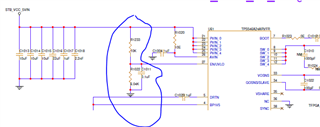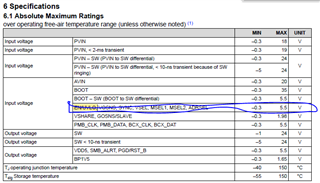Hello TI Team,
I have a query related to EN pin of the TPS546A24A . I wan to enable the regulator through Hardware (EN Pin) with Voltage divider by using the values (R1233-10K and R1022- 6.04K). Voltage_En= 1.88V

The Absolute maximum Ratings for EN is given as -0.3 to 5.5V and Electrical characteristics is given as 1.05 to 1.1V.


So Can some one suggest what voltage we can keep for EN pin to turn-on the regulator?
Regards
Kapil



